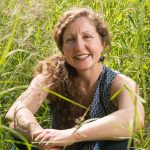New Studies Show Severe Fires are Natural and Ecologically Beneficial to Sierra Nevada Forests
August 8, 2014
Contacts:
Dominick A. DellaSala, Ph.D.; Geos Institute , 541-482-4459 x 302; 541-621-7223 (cell)
William Baker, Ph.D., University of Wyoming, Laramie, WY; 970-317-8162
Ashland, OR – Two recently published scientific studies add to a growing body of research on the ecological importance of forest fires, even severe ones, to the integrity of fire-dependent forests in the western U.S, particularly California’s Sierra region.
One study, published in the Natural Areas Journal, documented the ecological importance of forest fires in regenerating unique habitat for numerous plants and wildlife in the Sierra, including rare and threatened ones. The other published in Ecosphere compared historical records of forest fires to today’s fires and concluded that today’s fires in the Sierra are burning in size and intensity similar to the way fires once burned.
According to Dominick DellaSala, Chief Scientist of the Ashland-Oregon based Geos Institute and lead author of “Complex early seral forests of the Sierra Nevada: What are they and how can they be managed for ecological integrity?,” “Post-fire landscapes are often falsely portrayed as “moonscapes,” but they actually have some of the highest levels of plant and wildlife diversity of any Sierra forest type with levels comparable to what we see in the region’s more appreciated old-growth forests.”
A key finding of DellaSala’s research showed that post-fire landscapes are rich in large dead trees (snags) that connect a regenerating forest to the eventual old-growth forest that develops over time via the process of forest succession. Imperiled wildlife that depend on snags as “biological legacies” include the Black-backed Woodpecker, a fire dependent indicator species under consideration for listing as threatened due to dramatic losses of its post-fire habitat from logging, and the California Spotted Owl that forages in post-fire landscapes also damaged by post-fire logging.
DellaSala’s findings are relevant to controversial post-fire logging projects that inevitably follow most forest fires, he added “post-fire logging and related tree planting removes the very components that forests need to regenerate themselves and this is not “restorative” as claimed.” DellaSala was also lead author on a letter signed by over 200 scientists last January that urged the Forest Service to refrain from massive post-fire logging in the aftermath of the 2013 Rim fire on the Stanislaus National Forest.
Another study, “Historical forest structure and fire in Sierran mixed-conifer forests reconstructed from General Land Office Survey data” found that severe fires have long been a natural feature of Sierra Nevada mixed-conifer forests. According to William Baker, Emeritus Professor of Ecology at the University of Wyoming, “Contrary to what some believe, fires in Sierran mixed-conifers once did, and still do, burn in a pattern of mixed severities that include large patches, up to several thousand acres, of fire-killed trees as part of the natural fire cycle in this region.”
Baker tested prevailing assumptions about uncharacteristic fires by examining the US government’s General Land Office surveys from 1865 to 1885 and in these surveys examined the recorded forest composition by early surveyors as it related to historical fire influences.
Baker found that there is actually currently less high-severity fire in Sierra forests now than there was prior to the historical surveys, and noted that the current deficit of high-severity fire can be detrimental to forest ecosystems. Logging proposals to reduce fuels and fire severity would actually reduce, not restore, historical forest heterogeneity important to wildlife and resiliency.
Both studies reflect a growing scientific awareness of the ecological role of forest fires throughout the West, particularly severe ones. For example, a team of eleven fire scientists in February 2014 that included both DellaSala and Baker used a variety of research methods and found similar historical evidence of high-severity fires throughout fire-dependent forests in the western US and Canada. Their findings were published in PLoS One and run counter to the widely held assumptions that most forest fires today are burning uncharacteristically severe.
All three studies made similar recommendations for communities living adjacent to fire-dependent forests. Specifically, increased prioritization of fuel treatments are needed nearest homes given escalating costs of fighting fires in the backcountry where suppression forces are particularly ineffective during drought years.
View our “fireside chat” on strategies for addressing fires in a changing climate and other ecological benefits of fires.
> Click here for a National Public Radio interview with Dr. Dominick DellaSala (8/8/14)
Join the Cornerstone Network
Sign up with a monthly donation and become part of our Cornerstone Network. Network members recieve the messages posted here first, delivered directly to your inbox. Your ongoing support is the foundation of our work.

 Arsum is the Senior Adaptation and Coastal Resilience Specialist for the National Wildlife Federation’s Southcentral Region. In this role, she advances climate adaptation efforts, with a focus on nature-based approaches to address the impacts of climate change and extreme events across the Gulf region. She has authored and co-authored numerous publications on climate impact assessments and adaptation solutions. Additionally, she regularly participates in state-based coastal resilience and hazard mitigation planning across the Gulf, collaborating with regional and local stakeholders.
Arsum is the Senior Adaptation and Coastal Resilience Specialist for the National Wildlife Federation’s Southcentral Region. In this role, she advances climate adaptation efforts, with a focus on nature-based approaches to address the impacts of climate change and extreme events across the Gulf region. She has authored and co-authored numerous publications on climate impact assessments and adaptation solutions. Additionally, she regularly participates in state-based coastal resilience and hazard mitigation planning across the Gulf, collaborating with regional and local stakeholders. Frank is the former President of the Reinsurance Association of America. Frank currently serves on the Advisory Board of the OECD’s International Network for the Financial Management of Large-Scale Disasters, the RAND Center on Catastrophic Risk Management and Compensation, and the University of Cincinnati’s Carl H. Lindner III Center for Insurance and Risk Management Advisory Board.
Frank is the former President of the Reinsurance Association of America. Frank currently serves on the Advisory Board of the OECD’s International Network for the Financial Management of Large-Scale Disasters, the RAND Center on Catastrophic Risk Management and Compensation, and the University of Cincinnati’s Carl H. Lindner III Center for Insurance and Risk Management Advisory Board. Jim is a multilingual world traveler. Based in Bavaria during the 1970s, Jim spent most of this period in India, Afghanistan and Nepal, where he founded and operated a charitable medical clinic serving Tibetan Refugees. He settled in Oregon in 1983 on a forested ranch in the Umpqua National Forest.
Jim is a multilingual world traveler. Based in Bavaria during the 1970s, Jim spent most of this period in India, Afghanistan and Nepal, where he founded and operated a charitable medical clinic serving Tibetan Refugees. He settled in Oregon in 1983 on a forested ranch in the Umpqua National Forest. Dr. Micah Hahn is an Associate Professor of Environmental Health in the Institute for Circumpolar Health Studies at the University of Alaska-Anchorage. She received her joint PhD in Epidemiology / Environment and Resources from the University of Wisconsin-Madison and her MPH in Global Environmental Health from Emory University. Subsequently, she was a postdoctoral fellow for the CDC Climate and Health Program, and in this position worked collaboratively with the CDC Division of Vector-borne Diseases and the National Center for Atmospheric Research. Her research focuses on understanding the health impacts of climate change and working with communities to develop locally-relevant adaptation and resilience-building strategies. Dr. Hahn is also on the Management Team of the Alaska Climate Adaptation Science Center.
Dr. Micah Hahn is an Associate Professor of Environmental Health in the Institute for Circumpolar Health Studies at the University of Alaska-Anchorage. She received her joint PhD in Epidemiology / Environment and Resources from the University of Wisconsin-Madison and her MPH in Global Environmental Health from Emory University. Subsequently, she was a postdoctoral fellow for the CDC Climate and Health Program, and in this position worked collaboratively with the CDC Division of Vector-borne Diseases and the National Center for Atmospheric Research. Her research focuses on understanding the health impacts of climate change and working with communities to develop locally-relevant adaptation and resilience-building strategies. Dr. Hahn is also on the Management Team of the Alaska Climate Adaptation Science Center. Michael is a former Founding Principal of Resilient Cities Catalyst, a global non-profit helping cities and their partners tackle their toughest challenges. He is currently the Executive Director of Climate Resilience Academy at the University of Miami.
Michael is a former Founding Principal of Resilient Cities Catalyst, a global non-profit helping cities and their partners tackle their toughest challenges. He is currently the Executive Director of Climate Resilience Academy at the University of Miami. Dr. Quintus Jett is a consultant, educator, and strategist for public causes. He has a doctorate in Organizations & Management from Stanford University, and a two-decade faculty career which spans schools, departments, and programs of business, engineering, liberal studies, divinity, and public and nonprofit management. Following Hurricane Katrina in 2005, Dr. Jett launched a volunteer project in New Orleans, which enlisted residents, students from over a dozen colleges and universities, and hundreds of others to field map the city’s Gentilly district, Lower Ninth Ward, and New Orleans East. Dr. Jett is an innovator in higher education, bridging the divide between academic research and the other priorities of the modern university, including student access and diversity, community engagement, and providing foundations for life-long learning in today’s rapidly changing world.
Dr. Quintus Jett is a consultant, educator, and strategist for public causes. He has a doctorate in Organizations & Management from Stanford University, and a two-decade faculty career which spans schools, departments, and programs of business, engineering, liberal studies, divinity, and public and nonprofit management. Following Hurricane Katrina in 2005, Dr. Jett launched a volunteer project in New Orleans, which enlisted residents, students from over a dozen colleges and universities, and hundreds of others to field map the city’s Gentilly district, Lower Ninth Ward, and New Orleans East. Dr. Jett is an innovator in higher education, bridging the divide between academic research and the other priorities of the modern university, including student access and diversity, community engagement, and providing foundations for life-long learning in today’s rapidly changing world. Scott is Monfort Professor of Atmospheric Science at Colorado State University. He has written about 100 publications in the peer-reviewed climate literature, is a former editor of the Journal of Climate, and served for five years as founding Science Chair of the North American Carbon Program.
Scott is Monfort Professor of Atmospheric Science at Colorado State University. He has written about 100 publications in the peer-reviewed climate literature, is a former editor of the Journal of Climate, and served for five years as founding Science Chair of the North American Carbon Program. Linda has many years of experience in disaster preparedness and resilience. She has been an elected official on the Linn County Iowa Board of Supervisors, Chair of the Metropolitan Planning Organization, the East Central Iowa Council of Governments, the statewide Mental Health Developmental Disability and the Linn County Board of Health. Langston is a former president of the National Association of Counties (2013-2014).
Linda has many years of experience in disaster preparedness and resilience. She has been an elected official on the Linn County Iowa Board of Supervisors, Chair of the Metropolitan Planning Organization, the East Central Iowa Council of Governments, the statewide Mental Health Developmental Disability and the Linn County Board of Health. Langston is a former president of the National Association of Counties (2013-2014). Ken works with families and organizations as a mediator, organizational consultant, trainer and facilitator. Along with his passion for helping people prepare for and reduce climate change, Ken also volunteers as a mediator through Mediation Works and is passionate about supporting youth through mentoring with Boys to Men of Southern Oregon.
Ken works with families and organizations as a mediator, organizational consultant, trainer and facilitator. Along with his passion for helping people prepare for and reduce climate change, Ken also volunteers as a mediator through Mediation Works and is passionate about supporting youth through mentoring with Boys to Men of Southern Oregon. Matthew is a retired high school teacher who was once honored as Oregon High School Social Studies Teacher of the Year. Before his teaching career he was in the restaurant business in Portland. He is also a lawyer who has been a member of the Oregon State Bar Association since 1980.
Matthew is a retired high school teacher who was once honored as Oregon High School Social Studies Teacher of the Year. Before his teaching career he was in the restaurant business in Portland. He is also a lawyer who has been a member of the Oregon State Bar Association since 1980. Andrea is the Resilience Policy Advisor for the North Carolina Office of Recovery and Resiliency. She works across state agencies and with local governments to increase the state’s resilience to the impacts of climate change.
Andrea is the Resilience Policy Advisor for the North Carolina Office of Recovery and Resiliency. She works across state agencies and with local governments to increase the state’s resilience to the impacts of climate change.